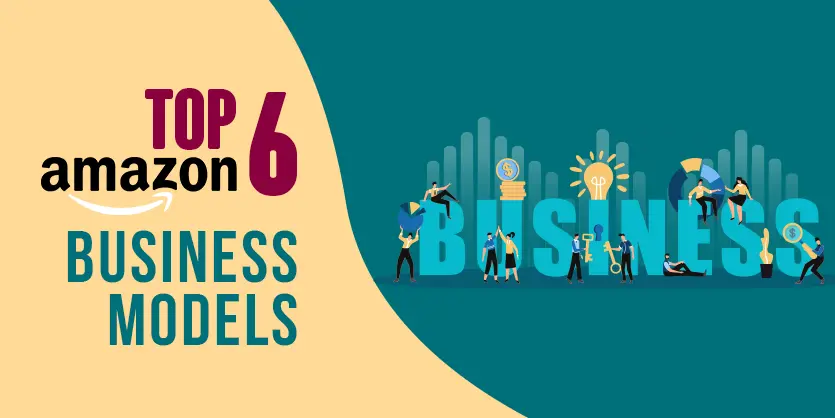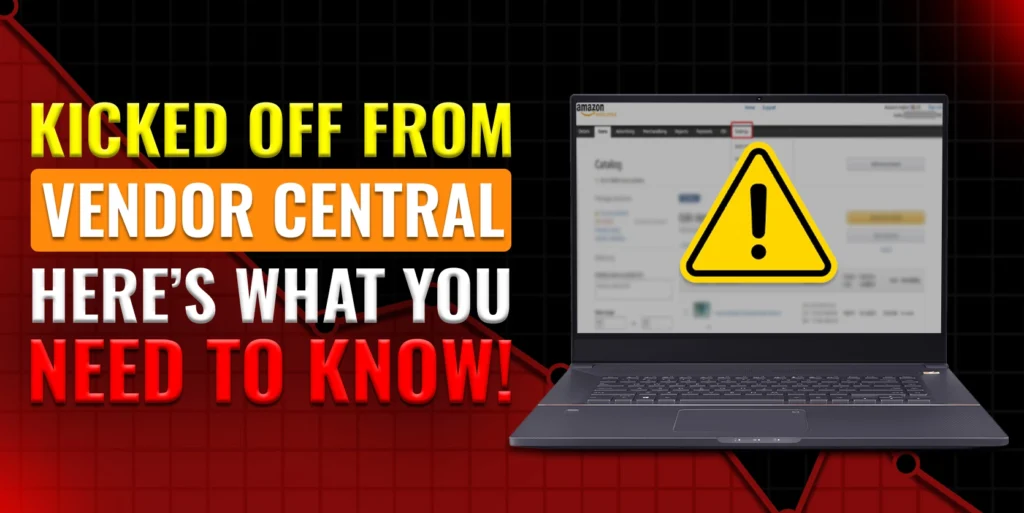Amazon is a platform where opportunities abound and success stories are forged every day. If you’ve ever wondered about the diverse strategies that sellers employ to thrive on the Amazon platform, you’re in the right place. In this article, We’ll explore the six most popular Amazon business models that have inspired entrepreneurs and led to impressive outcomes.
Understanding these business models is key to making informed decisions that align with your goals. With the Amazon marketplace offering unparalleled reach and customer engagement, choosing the right path can be the key to your success in the world of E-commerce.
A quick look into the article:
- Private Label Business
- Retail Arbitrage Business
- Online Arbitrage Business
- Wholesale Business
- Dropshipping Business
- Handmade Business
- Other Business Models
- Final Thoughts
Private Label
The first and most popular business model is Amazon’s private label. A private label business on Amazon involves creating and selling your own branded products on the Amazon platform. Instead of selling well-known name-brand products, you develop your own products, apply your own branding and packaging, and then list and sell them on Amazon’s marketplace. Impressively, 54% of Amazon sellers opt for this model, an undisputed leader among the choices.
Suppose you want to sell wallets – and you find out a well-known wallet brand that is already doing great business. So you connect with a manufacturer to create the same product with your brand logo. That’s exactly what private label is all about! It’s like rebranding or renaming a product with your own special touch.
Before we venture further, let’s touch on investments. The private label may demand a slightly more substantial initial outlay compared to other routes. On average, 61% of private label sellers invest $2,500 or more to commence their journey. Remember, success often requires sowing seeds of financial commitment.
The private label business model on Amazon can be profitable, a remarkable 56% of private label sellers reel in $5,000 or more in monthly sales, demonstrating substantial revenue potential. Moreover, 35% of these enterprising sellers begin to taste the sweetness of profit within the first six months of their Amazon business.
While not the swiftest route, 48% of private label sellers launch their enterprises within three months or less. Here’s an exciting tidbit – running a private label venture doesn’t monopolize your time. 58% of private label sellers dedicate fewer than 20 hours weekly to their businesses, with a remarkable 15% overseeing operations in less than four hours!
Now, let’s discuss how to get started with the private label business. First, you’ll need to dig into Amazon’s product database to find niches where there’s demand but not too much competition. Once you’ve spotted a promising area, reach out to manufacturers to create your unique product. And don’t forget the all-important step of creating an eye-catching listing when you launch your product on Amazon.
To make things easier, a lot of sellers use Amazon’s FBA program. It’s like having your own assistant – Amazon takes care of storing, shipping, dealing with returns, and helping customers. It’s a breeze! But, as with any business, there are challenges. For private label sellers, some of the toughest parts are making sure your product shows up well in search results, choosing the right things to sell, keeping track of how much stock you have, dealing with Amazon’s pay-per-click (PPC) ads, and getting those valuable product reviews.
Retail Arbitrage
The second business model is Retail Arbitrage. Retail arbitrage is a straightforward yet potentially profitable method of making money by purchasing products from retail stores at a lower price and then reselling them at a higher price on the Amazon marketplace. This practice takes advantage of price disparities between different retail outlets or between physical stores and online marketplaces.
The good news is, it’s a wallet-friendly way to kickstart your Amazon journey. Nearly half of retail arbitrage sellers (49%) start with less than $1,000, and one in three begin with even less, under $500. It’s an affordable option to get going. Now, let’s set expectations. Like any business, building your success takes time. Retail arbitrage might be inexpensive to start, but it’s also among the less profitable methods. However, don’t fret – it’s still a money-making opportunity. A majority (62%) of retail arbitrage sellers earn less than $5,000 per month on Amazon, with a quarter making less than $500.
Almost half (46%) of retail arbitrage sellers take up to six months to see notable profits, and a significant number (48%) have profit margins of less than 20%. However, 41% of sellers hit the ground running within just six weeks. Also, you won’t need to dedicate all your time. For 60% of retail arbitrage sellers, 20 hours per week is the max, and a quarter manages it all in less than four hours. It’s the perfect side hustle to complement your busy lifestyle.
If you’re wondering about top-performing categories, Home & Kitchen leads the way at 47%, followed by Toys & Games, Books, Beauty & Personal Care, and Grocery & Gourmet Food. Plenty of exciting options await!
So, to start your retail arbitrage business on Amazon, scout for remarkable products at the best prices, then list them on Amazon. But remember, challenges are part of the journey too. Don’t worry, you’ve got options – handle it yourself or let us assist you. Your success, your way.
Online Arbitrage
Now, let’s explore the Online Arbitrage model, chosen by 24% of Amazon sellers. Online Arbitrage is similar to Retail Arbitrage, but instead of physical stores, you search for discounts and deals on products from online retailers.
For example, during Amazon Prime Day or Black Friday, you’re scouting different websites, and you find a fantastic deal on wireless headphones – the price is much lower than usual. So, you grab that deal, and here’s the interesting part – later you put those headphones up for sale on Amazon, listing them at a slightly higher price.
On average, 58% of sellers venturing into online arbitrage kick off with less than $2,500. This means you don’t need a huge amount of money upfront. And, interestingly, more than half (54%) of these deal-seekers manage to turn a profit of 16% or even more. That’s the money you’re left with after covering your starting costs and all the fees.
In a nutshell, Online Arbitrage is about being a smart online shopper, knowing where to find great deals, and then cleverly selling items on Amazon for a bit more. It’s a way to put your money to work without having to spend a ton upfront.
Wholesale Business
Let’s shift our focus to another popular option, the Wholesale business model – which attracts 26% of Amazon sellers. With wholesale, you buy products in bulk directly from manufacturers and then sell them on Amazon at the regular retail price.
Here’s a step-by-step breakdown of how the Wholesale model works:
- Sourcing Products: In the Wholesale model, you’ll begin by identifying products that have a consistent demand and market presence. These products are usually well-known brands that are already popular among consumers.
- Finding Suppliers: Your next task is to establish relationships with manufacturers or authorized distributors who produce these popular products. These suppliers are often eager to work with resellers who can help them reach a wider audience.
- Bulk Purchasing: Once you’ve established a supplier relationship, you’ll buy products from them in large quantities at a discounted wholesale price. This discounted price is often significantly lower than the regular retail price.
- Listing on Amazon: With your purchased products in hand, you create listings on Amazon just like any other seller. These listings showcase the products, their features, and benefits, and are priced at the regular retail price.
- Selling and Fulfillment: When a customer places an order for your product on Amazon, you fulfill the order by shipping the product from your bulk inventory. Alternatively, you can also use Amazon’s FBA (Fulfillment by Amazon) service, where Amazon handles the storage, packaging, and shipping of your products to customers.
The main advantage of the wholesale business model is that it offers a faster way to join Amazon’s online marketplace. It does this by taking advantage of products that are already popular and in high demand. This means that sellers can expect a steady flow of customers interested in buying these products. Additionally, suppliers often provide help and resources, making it easier for sellers to list and sell these products. This model is a straightforward approach for sellers to tap into what customers already like and recognize.
However, it’s important to note that the Wholesale model brings a rise in competition, stemming from the widespread appeal of the products on offer. While it ensures a steady flow of buyers, the trade-off is that profits earned from each sale might be slimmer when compared to alternative approaches. Furthermore, the scope for tailoring products to your unique vision is constrained since sellers operate within the framework of recognized brands and well-established items.
In summary, the Wholesale business model on Amazon involves sourcing products from manufacturers in bulk, selling them at regular retail prices on the platform, and benefiting from existing brand recognition and customer demand. On average, 47% of wholesale sellers spend less than $2,500 to get started, and 58% of wholesalers have profit margins of less than 20%. It’s a viable option for those seeking a faster entry into Amazon selling and willing to work with established products and suppliers.
Dropshipping
Now, let’s discuss the dropshipping model, which is chosen by 17% of sellers. When you act as a middleman between customers and suppliers – then it can be recognized as dropshipping.
For instance, let’s say you’re eyeing those trendy phone cases. Instead of stocking them yourself, you team up with a dropshipping supplier who handles all the shipping intricacies. So, when a customer makes an Amazon purchase from you, your supplier springs into action, shipping the item directly to the customer’s doorstep. No worries about managing inventory or fretting over shipping times – it’s a hands-off approach.
However, a note of caution: because you’re not inspecting the items personally before they’re dispatched, keeping an eye on product quality is crucial. On an average scale, half of dropshippers kickstart their Amazon journey with less than $2,500, and nearly half of them operate within profit margins ranging from 11% to 25%.
Dropshipping holds promise as a low-cost entry into the business world, but due diligence is essential. Prioritize research and select a dependable supplier for a smooth experience. It can be a great way to start a business with little upfront investment, but it’s important to do your research and choose a reliable supplier.
Here are a few tips for success in dropshipping:
- Choose a popular product that is in demand.
- Do your research on suppliers and find one that has a good reputation.
- Set competitive prices and offer free shipping.
- Provide excellent customer service.
By following these insights, you’ll be well on your way to success in dropshipping.
Handmade Business
Now, let’s delve into the Handmade business model, tailored for those with a knack for creating distinctive items like jewelry or candles. This approach resonates with customers who hold a deep appreciation for the personal touch and craftsmanship imbued in handmade goods. However, while Handmade offers a platform to showcase your artistic flair, expanding such a venture can present its own set of challenges.
Interestingly, a significant majority (53%) of Amazon Handmade sellers kick-started their journey with a modest investment of less than $2,500. This signifies that entry barriers can be relatively low, making it an accessible option for creative individuals looking to establish their presence on the Amazon marketplace.
What sets Handmade apart is its potential for favorable profit margins. A notable 52% of Handmade sellers report earning profit margins ranging between 11-25%. This trend suggests that the unique charm and individuality of handmade creations can translate into improved profitability compared to other models.
In essence, the Handmade model provides a platform where craftsmanship and creativity flourish, offering artisans an opportunity to connect with a discerning audience. While challenges related to scalability may arise, the allure of better profit margins and the joy of crafting something truly one-of-a-kind make the Handmade model an enticing avenue for aspiring entrepreneurs with a passion for creativity.
Other Amazon Business Models
Aside from these, Amazon presents a range of alternative business models that can also hold potential for success. While not as widely recognized as Handmade, these models, including Print-on-Demand, Subscription-Based Selling, Bundling, Exclusive Distribution, and Wholesale FBA, offer distinctive avenues for individuals to explore and potentially profit from.
Here’s a closer look at each of these models:
Print-on-Demand: This model empowers sellers to design and offer products that are produced as customers place orders. Items like custom t-shirts, mugs, and posters can be created and sold without the need for a large upfront inventory.
Subscription-Based Selling: With this model, sellers provide products or services on a recurring subscription basis, offering customers a convenient way to receive items regularly.
Bundling: Sellers embracing the Bundling model can combine different products into a single package, presenting customers with a value-added offering that sets them apart from single-item sellers.
Exclusive Distribution: This model allows sellers to exclusively sell their products through Amazon, providing an opportunity for heightened visibility and potentially loyal customer engagement.
Wholesale FBA: Under the Wholesale FBA model, sellers can wholesale their products to Amazon, which then takes on the responsibility of selling these items on the Amazon marketplace.
Each of these models boasts its own set of advantages and challenges, catering to diverse seller aspirations and circumstances. Aspiring entrepreneurs are encouraged to thoughtfully assess their unique needs, objectives, and resources before making a decision on which business model aligns best with their Amazon journey.
Final Thoughts
Now, which model is right for you? Well, there’s no single answer that fits everyone. Many successful Amazon sellers have done well with different models, sometimes mixing things up. As you think about what to do, make sure to really look into each model, understand how they work, and think about what you’re good at.
Also, it’s important to understand that, no matter which model you go for, succeeding on Amazon requires sticking with it and putting in the effort. It’s like a journey where you need to keep going, adapt to changes, and be open to learning.
If you have any queries, please let us know through the comment box or email us at info@ecomclips.com.
To know more about Amazon, please check out our other blog. Also, you can check our YouTube videos related to Amazon.
Amazon FBA Inventory Planning | IPI Score and Re-Stock Items to FBA Guide 2023
Amazon SEO: 7 Tips to Optimize Your Listings and Rank High | Boost Your Listings & Increase Sales
Variation Wizard in Amazon | Use Variation Wizard to add a Variation to Existing Listing on Amazon
Amazon Section 3 Suspension | Reinstate Your Account Now with the Perfect Appeal Letter
5 Strategies To Drive External Traffic To Amazon Listings | Maximize Your Sales Potential in 2023



